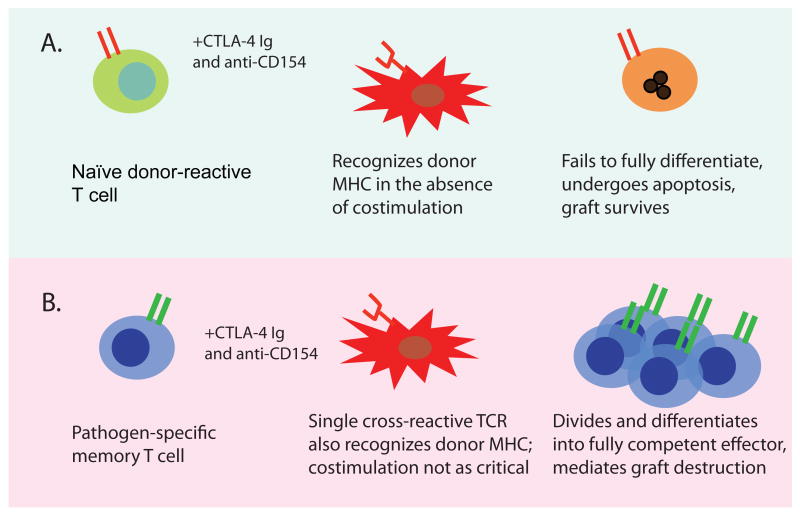Figure 2.
Heterologous immunity to pathogens is a potent barrier to transplantation tolerance/long-term graft survival induced by costimulation blockade. A, Naïve donor-reactive T cells encounter donor antigen under the cover of costimulation blockade, fail to fully differentiate, undergo apoptosis, and therefore fail to mediate destruction of the graft. B, Memory T cells specific for pathogen-derived epitopes presented by self MHC may cross-react with donor-derived MHC and become activated. By virtue of their reduced requirement for CD28 and CD40 mediated costimulation during reactivation, these pathogen-derived memory T cells may then expand, differentiate, and mediate graft destruction.

